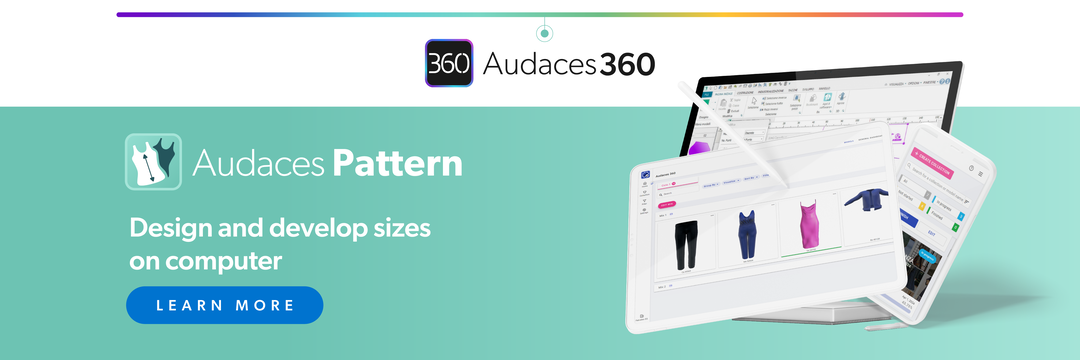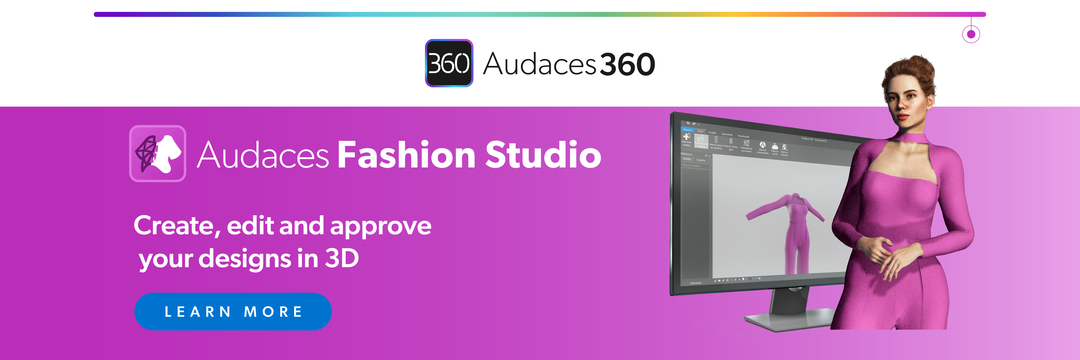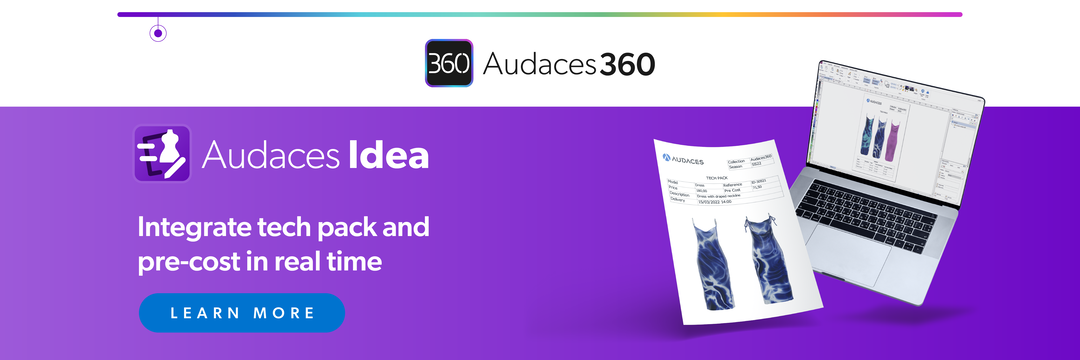Summary
- Plaid print patterns have held a strong place in fashion for centuries.
- Choosing the right plaid can shape the entire tone of a garment.
- Experience the future of fashion with Audaces360.
From royal tartans to punk rock statements, plaid prints have evolved across cultures and styles. Whether used in streetwear, tailoring, or high fashion, plaid continues to bring texture, structure, and story to any collection.
For fashion designers, understanding these prints means translating ideas into real garments. This is because each pattern carries its own mood. Some designs evoke heritage and tradition, while others feel bold, rebellious, or playful.
In this article, you’ll explore the top plaid print patterns. Moreover, we’ll show you how to use them to design creative and successful collections.
Happy reading!
Sumário
What makes the plaid print so important in fashion?
Plaid print holds a unique place in fashion thanks to its strong visual identity and long history. It represents tradition, rebellion, and reinvention at the same time.
Designers value plaid for its versatility. You can use it in structured tailoring, relaxed streetwear, or soft, flowing garments.
Depending on the color palette and fabric, a plaid print can feel classic, edgy, or even playful. This flexibility makes it a go-to choice for many collections.
Beyond style, plaid prints also perform well commercially. Consumers often associate them with comfort, quality, and timeless appeal. That combination of emotional connection and design potential explains why plaid continues to thrive season after season.
The origins of plaid print in clothing production
Plaid has deep roots in textile history, dating back centuries. The pattern originally appeared in woven wool fabrics, especially in Scotland. By the 18th and 19th centuries, plaid patterns spread beyond the country and into mainstream European fashion.
Industrial weaving made it easier to produce these designs in large quantities, especially for workwear and uniforms.
In the 20th century, plaid gained even more visibility. It became a symbol of British punk in the 1970s, thanks to designers like Vivienne Westwood. At the same time, American fashion embraced plaid flannel shirts as part of grunge and outdoor aesthetics.
Today, fashion production continues to use plaid across all segments: luxury, fast fashion, and independent labels.
Learn more: Discover the best types of prints for your collection
12 most popular types of plaid print in fashion

1) Tartan plaid
Tartan plaid features horizontal and vertical bands in multiple colors. They cross at right angles to form a grid of checks. Traditionally tied to Scottish heritage, tartans originally identified different clans and carried deep cultural meaning.
Today, people still associate tartan with tradition, especially during ceremonies and holidays.
2) Prince of Wales plaid
Prince of Wales plaid combines several elements, like Glen plaid, checks, and subtle overchecks. The name honors the Duke of Windsor, who favored this elegant mix for his suits.
When paired with unexpected fabrics or silhouettes, it can strike a perfect balance between heritage and innovation.
Learn more: Explore how to design prints in 6 simple steps
3) Houndstooth plaid
Houndstooth uses broken, jagged checks that repeat in a staggered grid. The design creates a bold optical effect and often appears in black and white. However, modern versions explore colorful or oversized variations.
The sharp contrast and movement of houndstooth make it ideal for drawing attention. It often adds a dynamic edge to coats, skirts, and matching sets.
4) Windowpane plaid

Windowpane plaid has thin lines spaced widely apart, creating large squares that resemble window frames. The simplicity of this pattern gives it a clean and minimal look, which makes it popular in tailored clothing.
Because of its airy structure, windowpane doesn’t overwhelm a silhouette. It lets the cut and construction of a garment shine while still adding interest.
5) Madras plaid
Madras plaid comes from the Indian city of the same name and features bright colors in uneven checks. Made from lightweight cotton, this fabric originally suited tropical climates. Its slightly faded look and handwoven feel give it a casual, breezy charm.
In fashion, Madras brings a relaxed, summery vibe. You’ll often find it in resort wear, button-down shirts, and shorts.
6) Gingham plaid
Gingham uses evenly spaced checks in two colors, often white combined with a bold hue like red, blue, or black. The check sizes can vary, but the structure remains consistent.
Its cheerful, vintage look makes gingham a favorite in retro-inspired collections and casual styles. Designers also use it in unexpected ways, like layering or oversized tailoring, to give it a modern twist.
Want simple ways to bring technology into your creation process? Discover how 3D design can make your workflow smoother. Get your free e-book now!
7) Tattersall plaid
Tattersall plaid has thin, evenly spaced lines crossing at right angles, usually in two colors over a light background. Named after London’s Tattersall horse market, it originally appeared in horse blankets before moving into menswear.
Because it doesn’t overpower a look, Tattersall works well for mixing with other textures. It’s perfect for building preppy and polished outfits.
8) Buffalo plaid
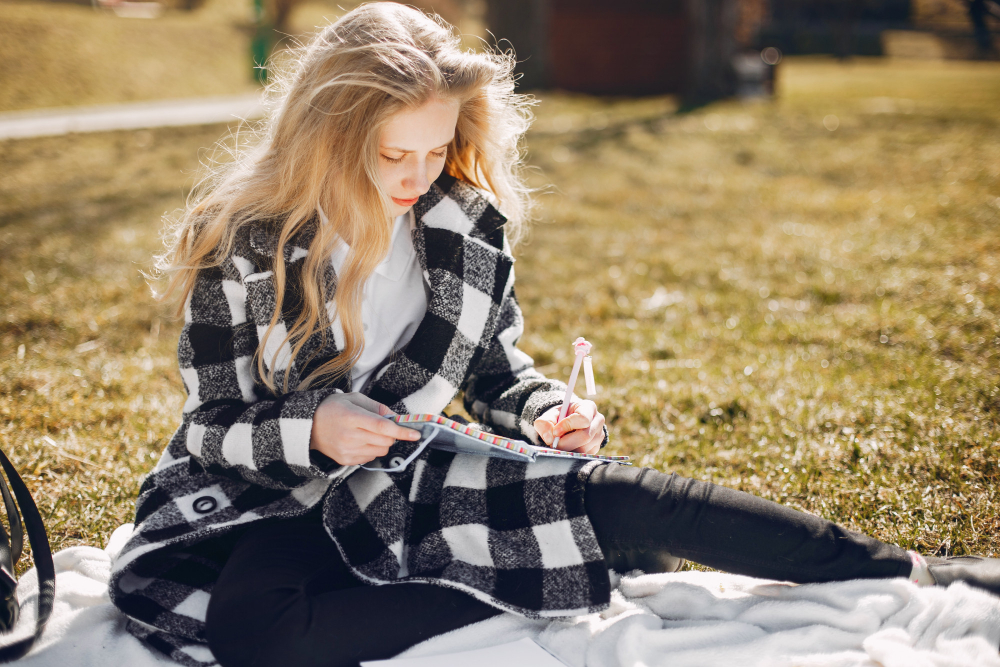
Buffalo plaid features bold, evenly sized checks. They are usually in black and red but also found in other high-contrast combinations like black and white.
Originally made popular in North America in the 1800s, this pattern is closely linked to rugged outdoor style. Today, it’s a favorite for casual jackets, flannel shirts, and cozy winter looks.
9) Shepherd’s Check plaid
Shepherd’s Check features a simple pattern of small, even checks in black and white or muted tones. Farmers and shepherds in the Scottish borders originally wore it, which gave the plaid its name.
This print often appears in wool coats, pants, and skirts, giving garments a grounded, rustic edge without feeling outdated.
10) Black Watch plaid
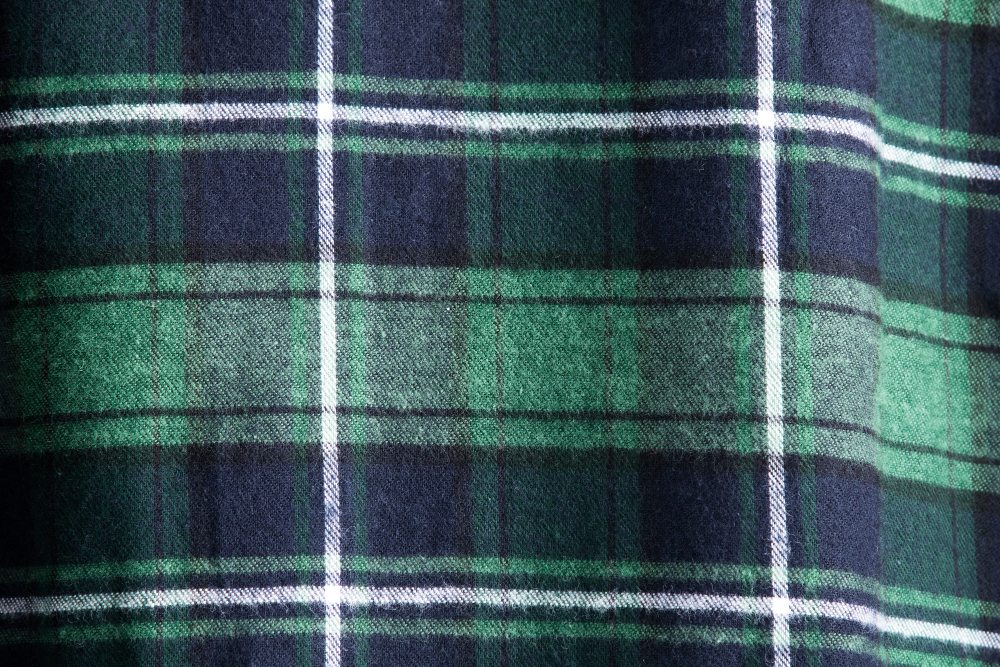
Black Watch plaid uses deep blue and green stripes with minimal contrast, creating a rich, dark pattern. The Scottish military originally used it as a uniform, which gave the plaid a strong and timeless identity.
In fashion, Black Watch feels both formal and versatile, adding texture without high contrast.
11) Dress Stewart plaid
Dress Stewart plaid shows off a white background with red, blue, green, and yellow overchecks. It’s a variation of the Royal Stewart tartan and traditionally appears in festive or formal settings.
The bright, balanced colors bring a celebration energy to any piece. Designers often reach for this print during the holiday season or to create standout items like scarves and pleated skirts.
12) Robertson plaid
Robertson plaid features red as the dominant color, crossed with navy and green stripes.
It belongs to the Robertson clan of Scotland and has a bold, symmetrical layout that looks vibrant but structured.
Which plaid clothing items sell the most?
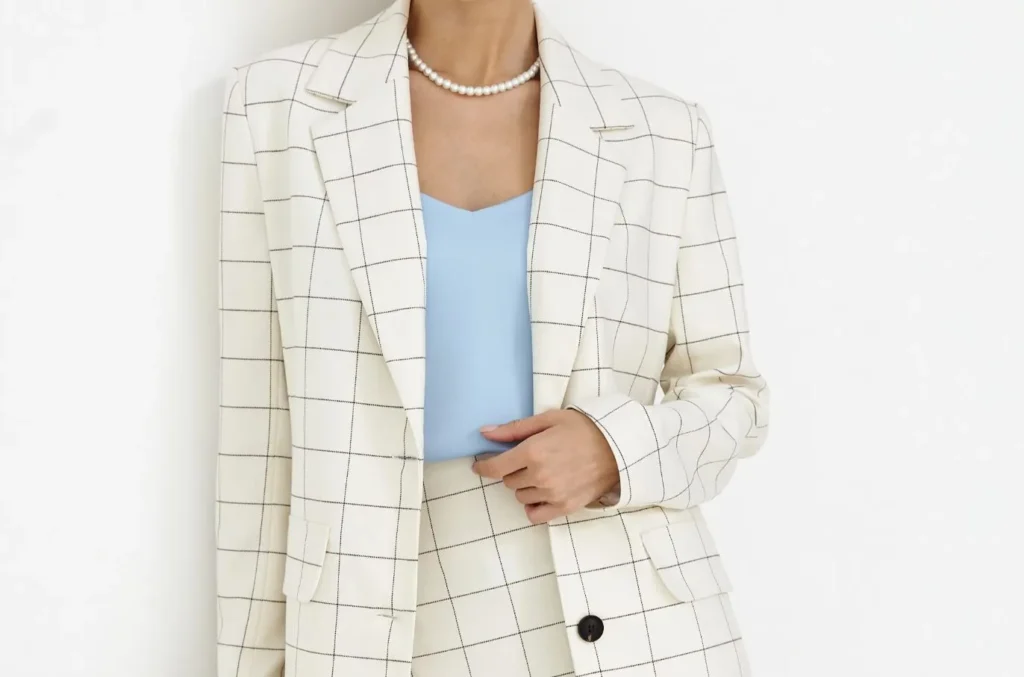
Shirts and blouses
Plaid shirts and blouses are perennial best-sellers thanks to their versatility and timeless appeal. The classic button-up plaid shirt, for instance, remains a favorite for layering and mixing with modern silhouettes.
Designers often experiment with scale, color, and fabric to reinvent plaid shirts each season. Oversized fits, cropped hems, puff sleeves, or asymmetrical cuts help bring a fresh edge.
Learn more: Step-by-step to create a shirt pattern on the computer
Blazers and coats
These have become essential pieces in women’s and men’s fashion. They offer a refined look while still allowing room for creative expression. Plaid outerwear can be made in Glen plaid for a corporate look or oversized Buffalo checks for a city style, for example.
They also benefit from the visual structure that plaid print brings. Coats in traditional tartan or bold contrast patterns often become wardrobe anchors, elevating even the simplest outfits.
Pants and skirts
Plaid pants and skirts are popular for their ability to stand out while remaining wearable. Tailored plaid trousers add interest to workwear or minimalist wardrobes. On the other hand, bold tartans or oversized prints push the boundaries of street style.
Skirts, especially mini and pleated styles, often lean into the heritage school-uniform aesthetic or punk-inspired looks. From structured midi skirts to flouncy plaid minis, this category allows for plenty of styling variety.
Learn more: Discover essential techniques on how to draw a skirt online
Dresses and matching sets
Dresses with plaid print strike a balance between vintage charm and modern flair. The pattern adds texture and depth without needing extra embellishment, making plaid an efficient design choice.
Matching sets, like a plaid crop top and skirt or blazer and shorts, offer a cohesive outfit that’s ready to wear. On top of that, they appeal to consumers looking for polished yet easy styling.
Scarves
Plaid scarves remain one of the most accessible and popular ways to wear the pattern. Their seasonal nature, especially in fall and winter, makes them a high-volume accessory item.
Whether worn with coats, layered over sweaters, or styled loosely around the neck, they bring warmth and color to any outfit.
Learn more: Learn the steps and benefits of a fashion design simulator
How to use plaid print as a style statement
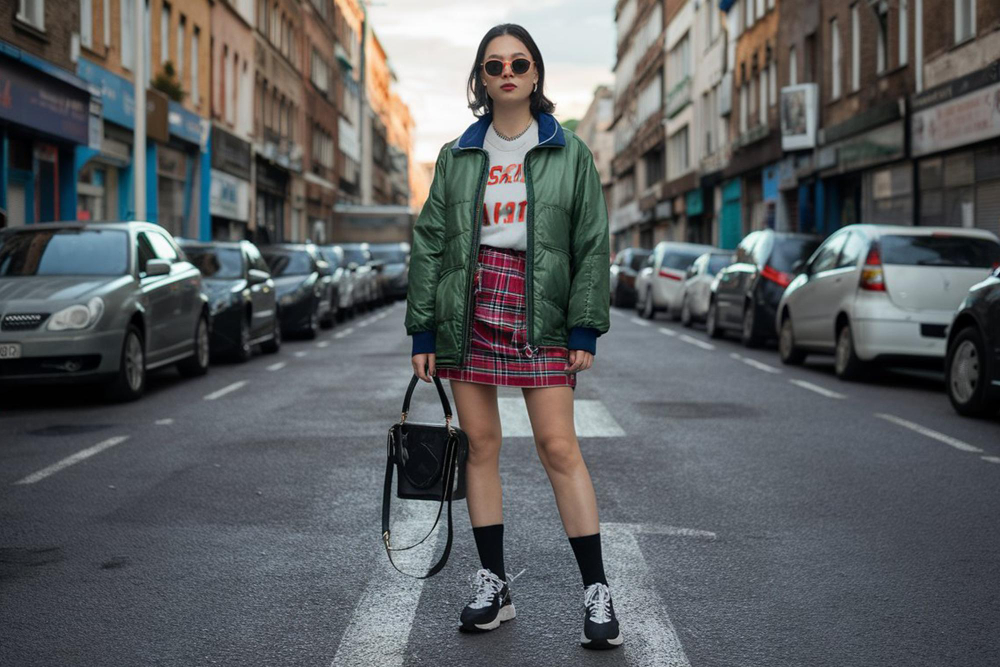
Designers can use plaid print to express tradition, rebellion, elegance, or playfulness depending on the scale, color, and styling.
To use plaid as a true style statement, balance is key. Pairing a bold plaid garment with solid-colored basics, for example, helps avoid clashing. Meanwhile, when used head-to-toe, plaid creates a striking effect, ideal for confident, fashion-forward consumers.
Color selection also plays a major role. Classic red-and-black Buffalo checks convey rugged Americana, while beige Glen plaids can communicate quiet luxury.
Ultimately, plaid’s strength lies in its adaptability. It can be rustic or polished, modern or conservative.
By thinking beyond the obvious and mixing plaid with the unexpected, designers can reinvent this pattern in new ways.
Learn more: Why invest in the quiet luxury trend to create a collection?
Design plaid print pieces directly on your computer!
Audaces is a market leader fashion technology company and a reference worldwide. Through a deep understanding of fashion creation and production, we have developed ideal solutions for each stage.
Audaces Fashion Studio
Audaces Fashion Studio is a groundbreaking innovation for fashion designers within Audaces360 multisolution.
This innovative technology empowers professionals to create smarter sketches on a 3D mannequin. It provides tools and functionalities to enhance your design process.
Its features enable you to examine fit, drape, and movement in different body types. Explore fabrics, colors, textures, and apply prints in a few clicks.
Audaces Idea
Audaces Idea is your solution for creating and applying prints to your designs.
It helps end errors and streamline communication between design and the other teams. This way, you can reduce the development cycle and ensure timely deliveries.
Audaces Idea also includes integrated tech packs and automatic pre-cost calculations. You can visualize all your creation information on a single screen during the process.
Automating technical tasks frees up your time for more design exploration!
Audaces Sofia
Meet Audaces Sofia our cutting-edge fashion Artificial Intelligence. It helps you enhance your creations with an unlimited source of inspiration.
This solution has the power to transform concepts into reality in a matter of minutes. Some simple prompts are all you need to generate print variations.
Audaces Sofia integrates with Audaces Idea and Audaces Fashion Studio. This combination provides you with the complete solution to create effortlessly
Discover Audaces360 and unlock a world of possibilities for fashion design and production. Explore our comprehensive suite of solutions today!
FAQ
Plaid print holds a unique place in fashion thanks to its strong visual identity and long history. It represents tradition, rebellion, and reinvention at the same time.
Plaid print originally appeared in woven wool fabrics, especially in Scotland. By the 18th and 19th centuries, plaid patterns spread beyond the country and into mainstream European fashion.
The most popular types of plaid print include tartan, Prince of Wales, houndstooth, windowpane, and buffalo.


